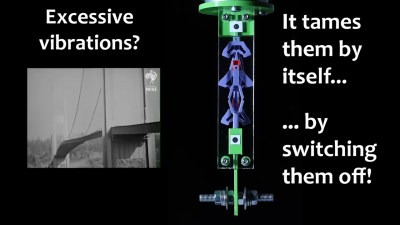Intuitively, you think that everything that you stretch will pull back, but you wouldn’t expect a couple of pieces of plastic to win. Yet, researchers over at [AMOLF] have figured out a way to make a mechanism that will eventually shrink once you pull it enough.
Named “Counter-snapping instabilities”, the mechanism is made out of the main sub-components that act together to stretch a certain amount until a threshold is met. Then the units work together and contract until they’re shorter than their initial length. This is possible by using compliant joints that make up each of the units. We’ve seen a similar concept in robotics.

Potentially this may be used as a unidirectional actuator, allowing movement inch by inch. In addition, one application mentioned may be somewhat surprising: damping. If a structure or body is oscillating through a positive feedback loop it may continue till it becomes uncontrollable. If these units are used, after a certain threshold of oscillation the units will lock and retract, therefore stopping further escalation.
Made possible by the wonders of compliant mechanics, these shrinking instabilities show a clever solution to some potential niche applications. If you want to explore the exciting world of compliance further, don’t be scared to check out this easy to print blaster design!
Continue reading “Compliant Mechanism Shrinks Instead Of Stretching”



















